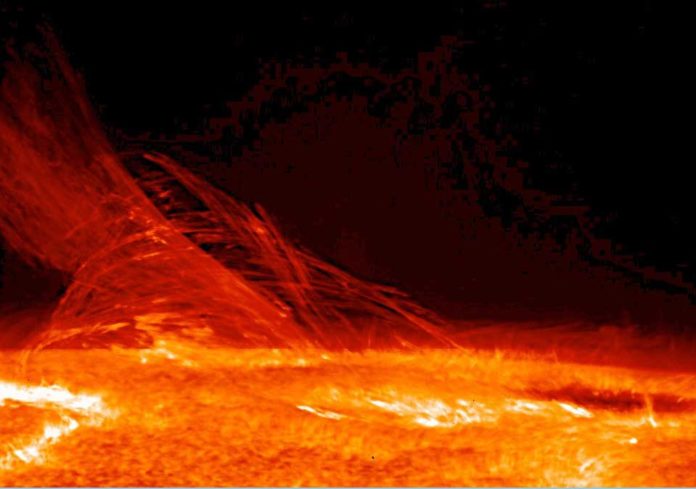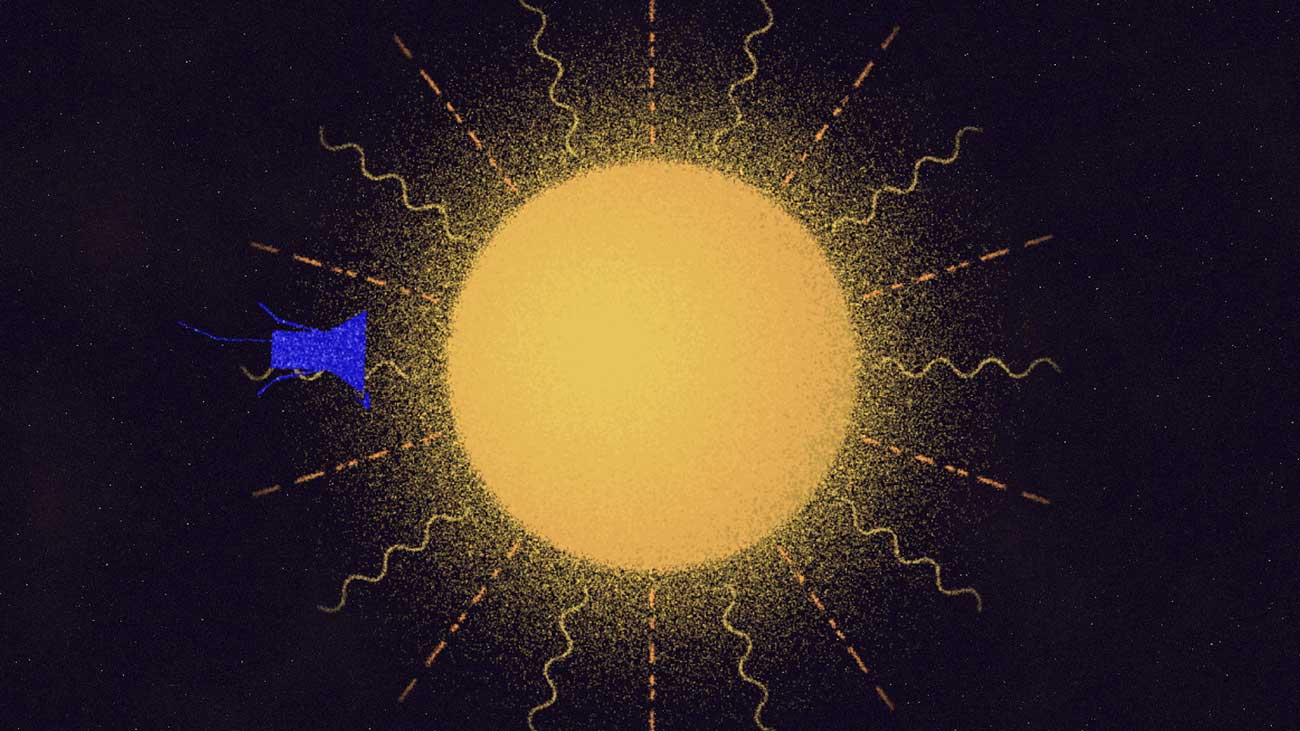For more than a half-century, since the problem of coronal heating was discovered in the 1940s, astronomers have tried to establish why the Sun’s outer atmosphere is so hot.
Solving the riddle would allow scientists to better understand and predict solar weather, which can pose serious threats to Earth’s power grid. Step one is determining where the heating of the sun’s outer atmosphere begins and ends—a puzzle with no shortage of theories.
Scientists at the University of Michigan may have solved the mystery with help from NASA’s Parker Solar Probe. Parker Solar Probe launched in 2018 and it is designed to revolutionize our understanding of the sun. It is expected to provide new data on solar activity and make critical contributions to our ability to forecast major space-weather events that impact life on Earth.
Finding the answer may allow scientists to better understand and predict solar weather, which can pose serious threats to Earth’s power grid. And step one is determining where the heating of the sun’s outer atmosphere begins and ends—a puzzle with no shortage of theories.
Justin Kasper, a U-M professor of climate and space sciences and a principal investigator for the Parker mission said, “Whatever the physics is behind this superheating, it’s a puzzle that has been staring us in the eye for 500 years. In just two more years, Parker Solar Probe will finally reveal the answer.”
In this “zone of preferential heating” above the sun’s surface, temperatures rise overall. More bizarre still, individual elements are heated to different temperatures or preferentially. Some heavier ions are superheated until they’re 10 times hotter than the hydrogen that is everywhere in this area—hotter than the core of the sun.
Such high temperatures cause the solar atmosphere to swell to many times the diameter of the sun and they’re the reason we see the extended corona during solar eclipses. In that sense, the coronal heating mystery has been visible to astronomers for more than a half millennium, even if the high temperatures were only appreciated within the last century.
This same zone features hydromagnetic “Alfvén waves” moving back and forth between its outermost edge and the sun’s surface. At the outermost edge, called the Alfvén point, the solar wind moves faster than the Alfvén speed, and the waves can no longer travel back to the sun.
Kasper said, “When you’re below the Alfvén point, you’re in this soup of waves. Charged particles are deflected and accelerated by waves coming from all directions.”
To estimate how far from the sun’s surface this preferential heating stops, scientists examined decades of observations of the solar wind by NASA’s Wind spacecraft. They observed how much of helium’s increased temperature close to the sun was washed out by collisions between ions in the solar wind as they traveled out to Earth. Watching the helium temperature decay allowed them to measure the distance to the outer edge of the zone.
Those calculations put the outer edge of the superheating zone roughly 10 to 50 solar radii from the surface. It was impossible to be more definitive since some values could only be guessed at.
At first, Kasper didn’t think to compare his estimate of the zone’s location with the Alfvén point, but he wanted to know if there was a physically meaningful location in space that produced the outer boundary.
After reading that the Alfvén point and other surfaces have been observed to expand and contract with solar activity, Kasper and co-author Kristopher Klein, a former U-M postdoc and new faculty at the University of Arizona, reworked their analysis by looking at year-to-year changes rather than considering the entire Wind Mission.
Kasper said, “To my shock, the outer boundary of the zone of preferential heating and the Alfvén point moved in lockstep in a totally predictable fashion despite being completely independent calculations. You overplot them, and they’re doing the exact same thing over time.”
So, does the Alfvén point mark the outer edge of the heating zone? Also, what precisely is changing under the Alfvén point that superheats heavy ions? We should know in the following couple of years.
In the coming years, Parker will get even closer with each pass until the probe falls below the Alfvén point. According to scientists, it should enter the zone of preferential heating in 2021 as the boundary expands with increasing solar activity.
Kristopher Klein, a former U-M postdoc and new faculty at the University of Arizona, said, “With Parker Solar Probe we will be able to definitively determine through local measurements what processes lead to the acceleration of the solar wind and the preferential heating of certain elements. The predictions in this paper suggest that these processes are operating below the Alfvén surface, a region close to the sun that no spacecraft has visited, meaning that these preferential heating processes have never before been directly measured.”
The paper is published June 4 in The Astrophysical Journal Letters.

